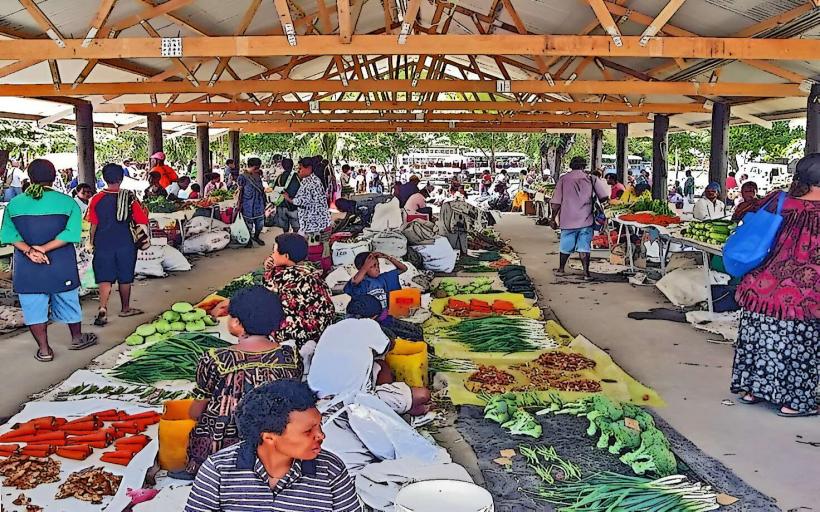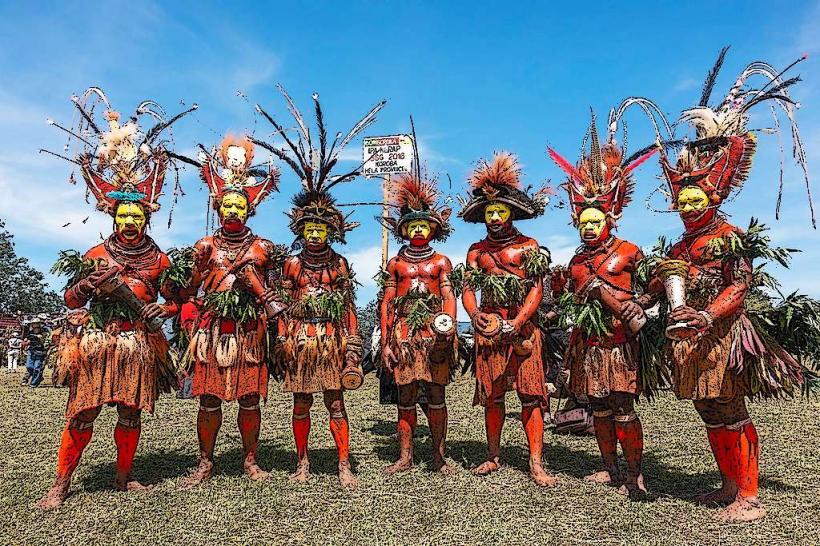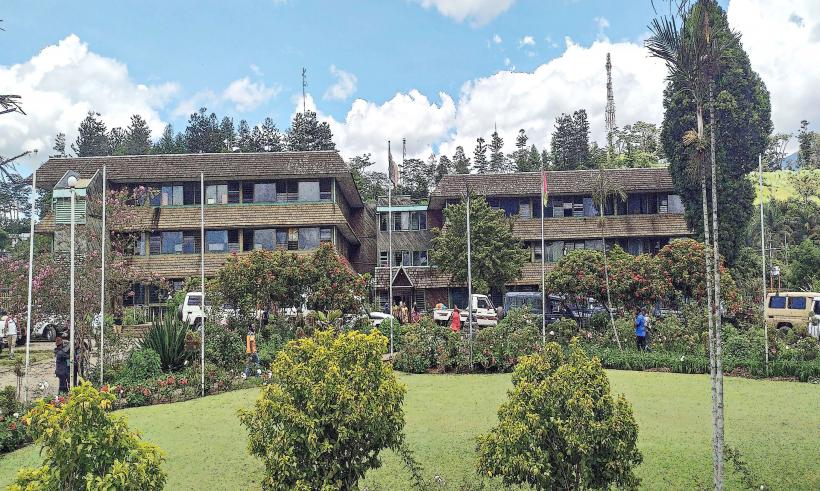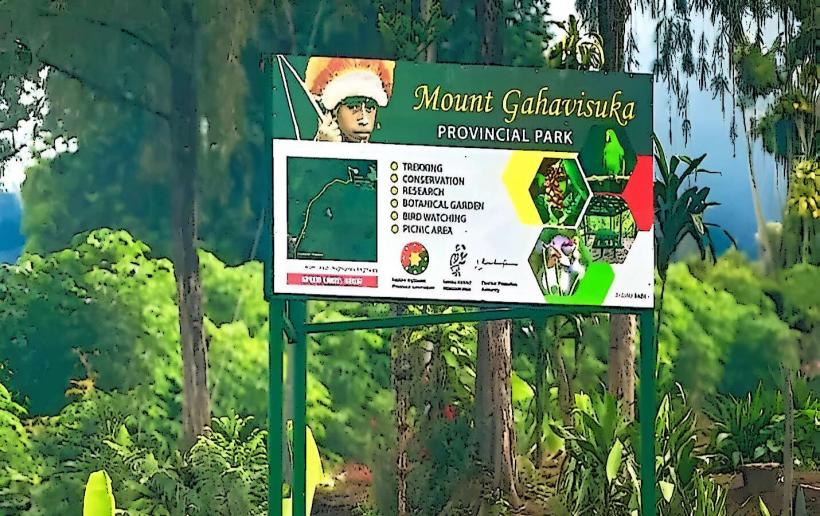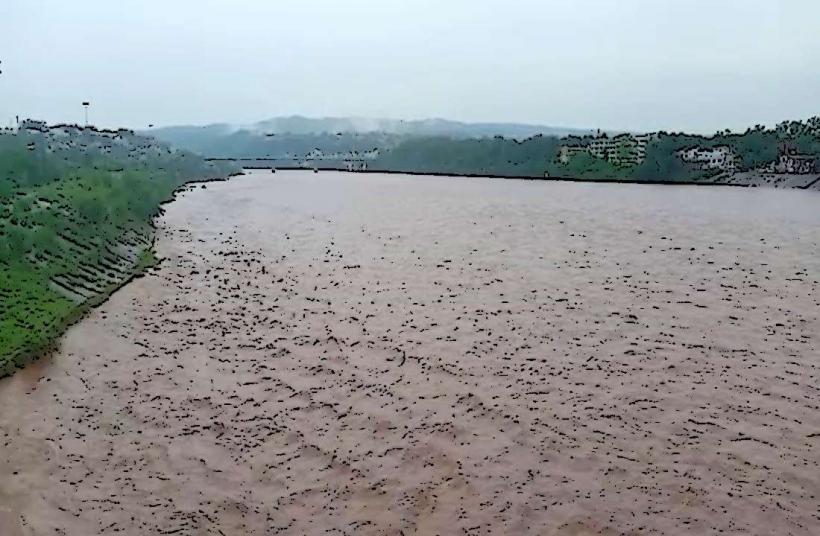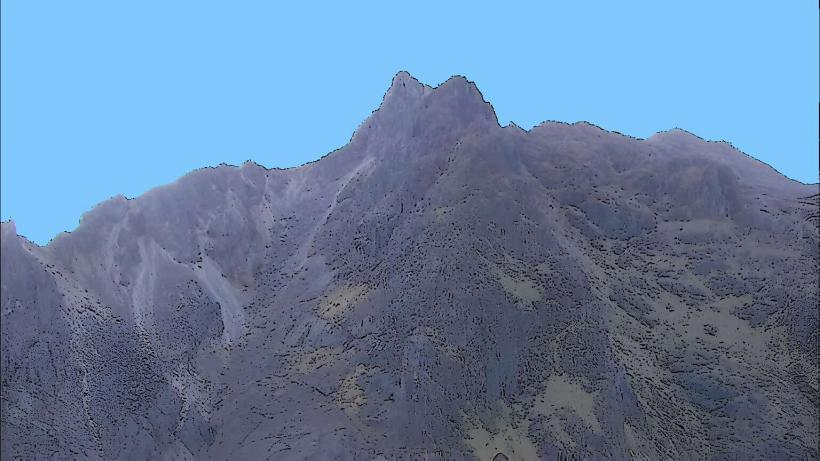Information
Landmark: Asaro Mudmen VillageCity: Goroka
Country: Papua New Guinea
Continent: Australia
The Asaro Mudmen Village is a cultural and historical site located near Goroka, in the Eastern Highlands Province of Papua New Guinea. The village is known for its mudmen—a unique group of indigenous people famous for their traditional mud masks and ritualistic performances. The Asaro Mudmen are part of the Asaro Valley community, which is one of the many Highlands tribes of Papua New Guinea.
Key Features of the Asaro Mudmen Village:
Origin of the Mudmen Tradition: The Asaro Mudmen are famous for their mud masks and ritual dances, which are integral to their cultural identity. According to local legend, the mudmen tradition was born out of a historical conflict between the Asaro people and a neighboring tribe. The Asaro were initially defeated, but they managed to scare their enemies by covering themselves in white clay and mud, creating eerie, ghostly appearances with their painted faces and exaggerated features.
The enemies, believing the Asaro to be spirits or ghosts, fled in fear, and the Asaro people were able to reclaim their land. Since then, the tradition of creating and wearing mud masks has become an important part of their cultural heritage, and it is passed down through generations.
Mud Masks and Body Art: The mud masks worn by the Asaro Mudmen are the most distinctive feature of their culture. These masks are made from a mixture of mud, clay, and natural pigments that are applied to the face and body. The mud is typically collected from local riverbeds, and the masks are carefully molded and shaped to create an exaggerated, ghostly appearance with large eyes, sharp features, and a pale, almost whitewashed look.
The masks are often paired with body painting and the wearing of loincloths made from natural materials. This distinctive appearance plays a key role in their ritual dances and performances, especially during cultural events, ceremonies, or festivals.
Cultural and Ceremonial Significance: The Asaro Mudmen’s masks are not just artistic expressions; they are imbued with deep spiritual significance. The mud is seen as a medium to connect with ancestral spirits and is often used in ceremonies to mark important life events, such as initiation rites, harvest festivals, and healing rituals. The ritual dances and performances that the mudmen engage in are designed to honor their ancestors and their spiritual beliefs, helping maintain a connection to the land and the natural world.
Dancing is an essential part of the Mudmen's performances. These dances are often performed to the beat of traditional drums and sometimes accompanied by singing, reenacting the ancient stories and legends passed down through generations.
Cultural Preservation and Tourism: The Asaro Mudmen Village has become a popular destination for cultural tourism, attracting visitors who are interested in seeing the traditional mud mask performances and learning about the unique history of the village. Tourists are often invited to observe or participate in the ritual performances, allowing them to experience firsthand the cultural significance of the mudmen tradition.
The village is a living museum, where visitors can interact with the locals, watch mudmen don their masks, and hear stories about their heritage. Many of the villagers are also involved in crafting and selling handmade crafts, such as bilums (woven bags), wooden carvings, and baskets.
Educational Experience: Visiting the Asaro Mudmen Village offers an educational opportunity for tourists to learn about the traditional customs, beliefs, and way of life of the Asaro people. Local guides and villagers often share stories about the history, origins, and symbolism of the mudmen’s customs, helping visitors understand the deeper meaning behind the mask-wearing and the performances.
Tribal Dances and Festivals: The Asaro Mudmen often participate in various cultural festivals, including the famous Goroka Show, where their mud mask performances are a major attraction. During these festivals, they may engage in competitive dance-off performances with other tribes, each showcasing their unique styles, costumes, and cultural expressions.
At the Goroka Show and other local festivals, the mudmen's energetic dances and spirited performances are among the most anticipated displays of traditional Highland culture. Visitors to these events can witness the spectacle of the mudmen, who perform in large groups, often with their faces fully covered in mud and masks, while dancing in sync to the rhythm of traditional drums.
Craftsmanship and Arts: In addition to the mud masks, the Asaro Mudmen are skilled in the creation of other artifacts and crafts. They produce intricately carved wooden items, including baskets, spear handles, and bowls, which they sell to tourists and collectors. The craftsmanship reflects their traditional way of life and the natural materials available in the Highlands, such as wood, clay, and natural pigments.
Some villagers also weave bilums, a traditional woven bag that is used for carrying goods and has become a symbol of Papua New Guinea’s cultural heritage. These bags are often made from string produced from the fibers of plants like pandanus or coconut.
Sustainability and Challenges: Like many indigenous communities, the Asaro Mudmen face challenges related to modernization and environmental changes. The village is located in an area with access to traditional natural resources, but the pressures of development, climate change, and globalization can affect the availability of materials needed for the creation of traditional masks and crafts.
To help preserve their culture and protect their livelihoods, the Asaro Mudmen are increasingly engaging in sustainable tourism and cultural preservation programs. These efforts aim to ensure that their traditional ways of life, including mask-making and ceremonial dances, are passed down to future generations.
Conclusion:
The Asaro Mudmen Village is a unique cultural destination in Papua New Guinea, offering an insight into the spirituality, art, and rituals of the Asaro people. The tradition of the mudmen—with their mysterious masks, exaggerated dances, and ancient customs—represents an important aspect of the cultural landscape of the Highlands region. A visit to the village provides an immersive experience in Papua New Guinea’s heritage, connecting visitors with one of the most distinctive cultural traditions in the world.

